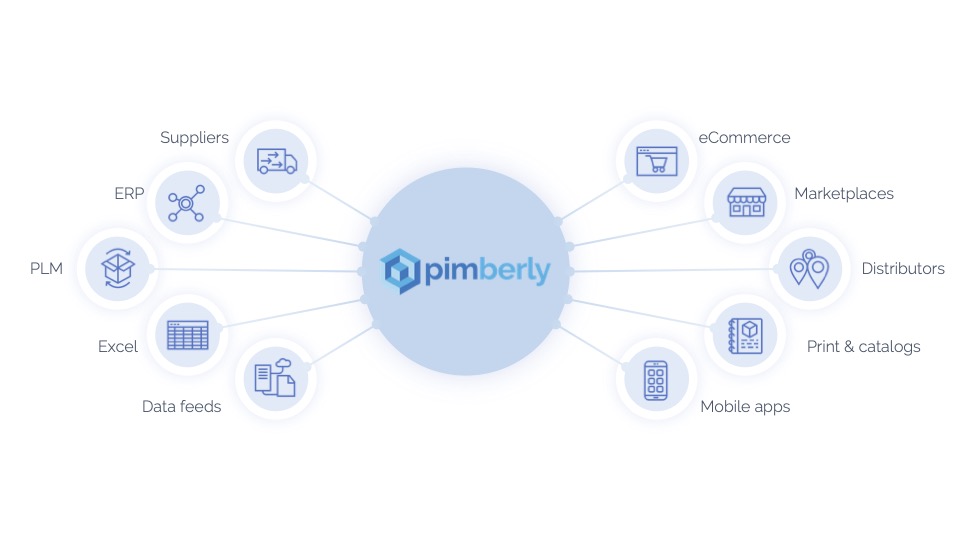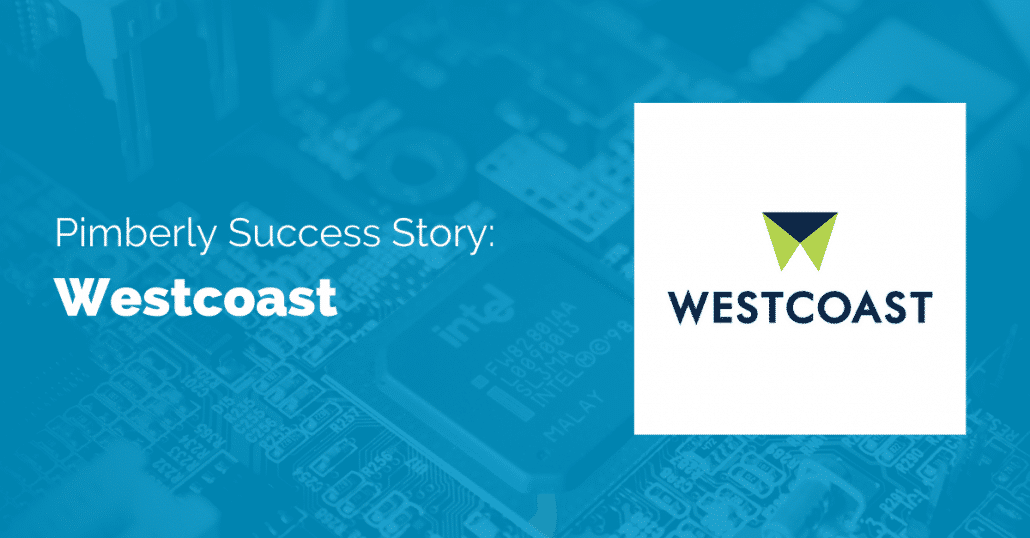Using a PIM puts all these departments on speed:
Product Research & Development
Product management automation gives you more time to focus on market research and innovation. This ensures that Product Managers have their finger on the pulse of what consumers actually want.
Prepare eCatalogs
Quickly prepare your products by filtering on a huge number of criteria, including AI-driven attributes like color palettes. Automatically enrich your product info for launch or prepare your sale discounts ahead of time. Easily edit imagery, across thousands of SKUs. Collaborate with team members to gather the last few bits of information for your catalog launch. Ensure the stress fee, timely launch of your product catalogs.
Warehousing and product fulfillment
Accurate SKUs and detailed product listings boost order picking and packing accuracy. Product images also help when you have multiple similar products.
Easy distribution across multiple marketplaces
Automate the distribution of your products across hundreds of different marketplaces. These also include Amazon, eBay, and Google shopping. Each of these can have their own product listing criteria, that can be complex to manage. Distributing your products at the touch of a button further extends your products’ reach and your online sales potential. Your PIM ensures that your data, products, and pricing are all up to date and removes any out-of-date listings.
Produce printed catalogs
Filter products, instantly sharing products SKUs, rich media, and detailed information accurately with your graphic designer or printer at the touch of a button.
Supercharge your sales team
Arm your sales team with accurate information. Ensure that they have up-to-date product information always to hand. Equip them with all the tools they need to close a sale before the sales cycle loses momentum and a sales lead can go cold. Not having to scrabble around for product specs, or wait for information, your sales team can focus 100% on selling.
By being backed up by exceptionally detailed products, your sales team can dedicate more of their efforts into closing leads. They can build rapport and warm up your customer interactions. Your sales teams are your relationship-building powerhouses and the guardians of your customer satisfaction. They are the best people to give you feedback straight from the front line of what customers really want.
Empower your customer support team
Your customer support team can access up-to-date, complete product information at all times. They deliver better customer service by ensuring that your customers immediately receive the answer they require. The need to escalate support calls to a Manager is greatly reduced. By providing a better customer experience, they seize every opportunity to build a warm rapport with your loyal customers.
Automatically produce product data sheets
Technical staff, Engineers, and Product Managers can now produce product data sheets (product technical specifications) at the touch of a button. You simply feed in the technical parameters, settings, and capabilities of your product and your PIM will automatically produce a branded PDF of your tech specs. This saves planning and design work. This shortens your product development cycle and speeds your product to market. Your PIM enables your engineers to sign off on tech specs before launch. Of course, if any edits are needed after your first iteration, these can be done right inside your PIM, in seconds, instead of hours.
Provide post-sales installation and product servicing information
You can add self-help, post-sales product configuration information to your product listing. This can include a product guide, installation instructions, a user manual, servicing schedule, ingredients listing, materials, washing instructions, and more.
This empowers your customers to set up their own products and troubleshoot any out-of-the-box issues they may experience. Having this information readily to hand reduces inbound help calls to your customer support team. This reduces your business costs and management time. Servicing information and general product support questions can also be provided online in your product listing.
Centralize Product Information Management
PIM software serves as a central hub for storing, organizing, and managing product information. It allows businesses to gather data from various sources and consolidate it into a unified platform. With the latest AI capabilities, these systems can automate the aggregation of data from different marketplaces, making the process even more efficient. Centralized data management enhances data consistency and accuracy, streamlining product information for marketing and e-commerce teams.
Centralize Product Information ManagementImprove Data Validation with AI
AI-powered PIM systems offer enhanced data validation capabilities. They use rule-based validation to enforce criteria and constraints on product data input. This includes checking for errors, inconsistencies, and compliance with specific formatting rules. Historical validation, powered by AI and machine learning, helps in flagging non-compliant data and aligning product information with customer preferences. Image-based validation, a significant advancement, streamlines product data enrichment by recognizing patterns, objects, and errors in images. The human-AI connection allows the system to continuously self-train and optimize data accuracy, reducing human workload.
Automate Product Attribute Generation
PIM software with AI-driven product attribute generation automates the extraction of product attributes from various sources, such as product descriptions, reviews, images, and unstructured data. It uses machine learning to analyze text data and identify relevant product attributes. Furthermore, AI recognizes different product parts through image recognition and assigns tags based on confidence levels. This technology improves the accuracy of product attributes and helps create user-defined criteria to ensure the tags are relevant to products. Additionally, AI can generate product descriptions with minimal input, addressing challenges like character limits and different customer profiles while maintaining creativity and consistency.
Automate Product Image Recognition and Attribute Generation
PIM software now comes equipped with AI-generated product image recognition capabilities. By leveraging AI, these systems can automatically identify objects in uploaded product images, decide on the appropriate attributes, and add relevant tags. This feature streamlines the process of adding attributes, such as color, material, size, and function, to product descriptions.
These tags are generated based on confidence levels, often using an 80% threshold. The AI’s machine learning capabilities ensure continuous improvement, learning from human corrections and user-defined features. This symbiotic relationship between humans and AI optimizes data accuracy and reduces the need for manual intervention. Additionally, product image recognition enhances the customer experience by providing similar product recommendations and optimizing product descriptions based on images.
Effortlessly Generate AI-Driven Product Descriptions
PIM software with AI capabilities simplifies the creation of product descriptions. It utilizes AI-generated product descriptions that require only minimal input, including character limits, keywords, and tone of voice. Machine learning adapts to this input and generates product descriptions that encompass the provided information. This significantly aids in addressing challenges, such as character limits, different customer profiles, and the need for unique descriptions for similar products. AI-generated descriptions can be tested and analyzed, allowing teams to select the most effective version for each product without manually creating multiple descriptions. The resulting descriptions provide a base for creative copywriters and can be customized as needed, ensuring a consistent brand tone.
Establish a Robust Product Data Bank with AI
Modern PIM software incorporates AI to create and maintain a robust product data bank. AI-powered systems can efficiently access enriched product information from popular online marketplaces like Amazon, Shopify, and eBay. This data includes attributes, pricing, and other essential details. By automating spec and sell sheets, product managers save time and reduce errors.
The AI-powered PIM software enhances time-to-market, allowing businesses to introduce new products quickly and stay competitive. The AI also ensures that product data sheets are always up-to-date. PIMs are equipped to search and retrieve product information, making it easier to set up on various marketplaces. The use of AI helps maintain data reliability, compliance, and consistency. Your database will always reflect the most current marketplace-specific product information, even as changes occur. The PIM software can utilize unique identifiers like UPC or ASIN to find the precise information you need, enhancing reliability and trustworthiness.












